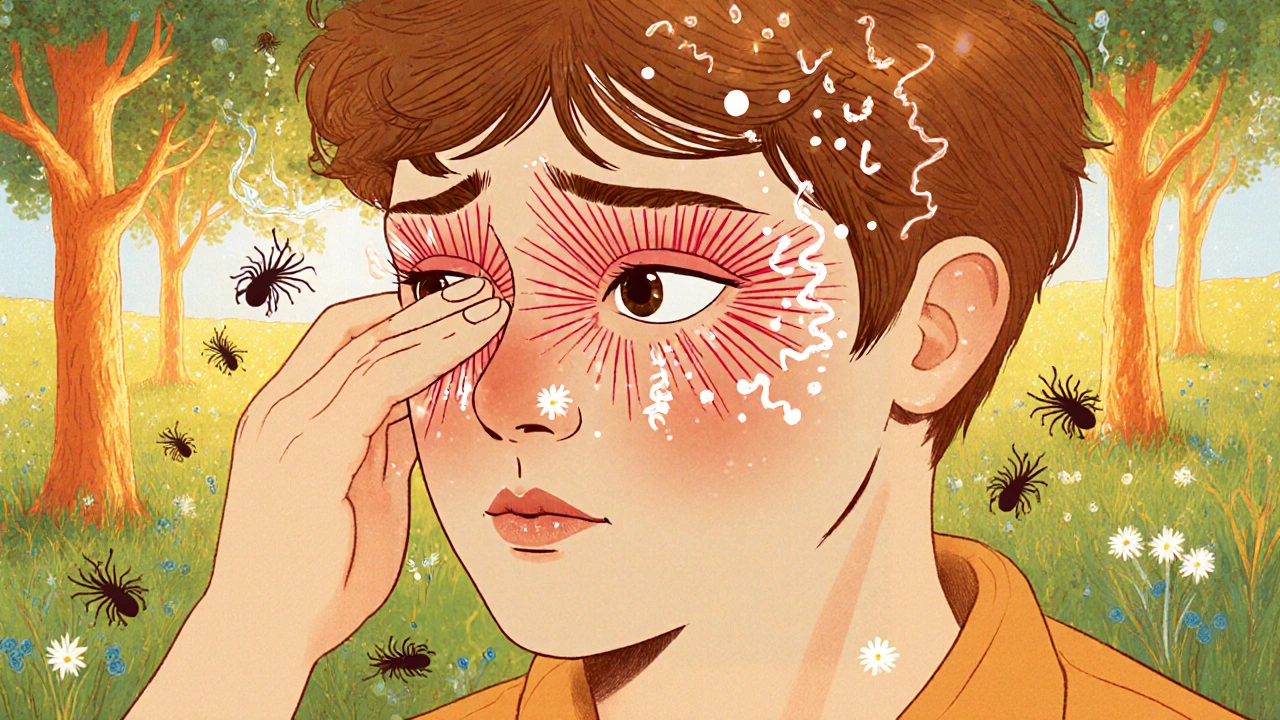Allergic Conjunctivitis Treatment: Practical Guide
When talking about allergic conjunctivitis treatment, the set of methods used to relieve eye inflammation caused by allergens. Also called allergy eye therapy, it combines medication, hygiene, and environmental tweaks. A core component is antihistamine eye drops, topical solutions that block histamine receptors and stop itching fast. For longer‑lasting control, many eye doctors add mast cell stabilizer eye drops, agents that prevent mast cells from releasing inflammatory chemicals. Together these two classes target the immediate itch and the later swelling, creating a balanced approach that most patients find effective.
Key Components of Effective Therapy
When the redness and discharge become stubborn, corticosteroid eye drops, potent anti‑inflammatory drops used for severe flare‑ups step in. They work by dampening the entire immune response, but they’re short‑term because of risks like increased eye pressure. That’s why doctors often pair them with oral antihistamines, systemic pills that keep histamine levels low throughout the body. The oral route helps when symptoms affect both eyes and the nose, providing a whole‑body shield. Another layer of comfort comes from lubricating eye drops, artificial tears that wash away allergens and keep the ocular surface moist. They don’t fight the allergy directly, but they reduce irritation and improve the efficacy of the medicated drops by ensuring even distribution.
Beyond drugs, a successful plan tackles the source. Allergy testing identifies the specific pollen, pet dander, or dust mite triggering the eyes, allowing targeted avoidance. Environmental control—using HEPA filters, washing bedding in hot water, and keeping windows closed during high pollen days—cuts the allergen load dramatically. For chronic sufferers, allergen immunotherapy (often called allergy shots) can recalibrate the immune system, reducing the need for daily eye drops over time. The treatment pathway typically follows a stepwise model: start with antihistamine drops, add mast‑cell stabilizers if relief fades, bring in lubricants for comfort, reserve steroids for flare‑ups, and consider oral antihistamines or immunotherapy for persistent cases. Understanding how each piece fits helps you or your patient avoid over‑medicating and minimizes side effects.
Now that you know the building blocks—antihistamines, mast‑cell stabilizers, steroids, oral meds, lubricants, testing, and environmental tactics—you're ready to see how they play out in real‑world scenarios. Below you’ll find detailed comparisons of popular eye‑drop brands, tips for choosing the right oral antihistamine, and guidance on when to bring a doctor into the loop. Dive into the articles to get actionable advice tailored to mild, moderate, and severe allergic conjunctivitis cases.

Allergic Conjunctivitis Explained: Causes, Symptoms & Treatment Options
Learn what triggers allergic conjunctivitis, how to recognize its symptoms, and the most effective treatments-from eye drops to home remedies-for lasting relief.